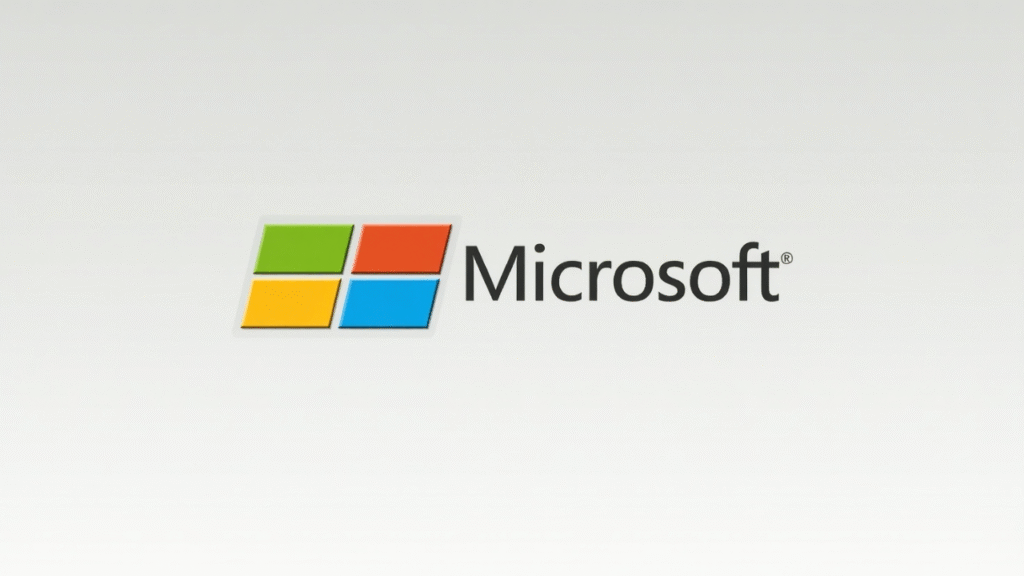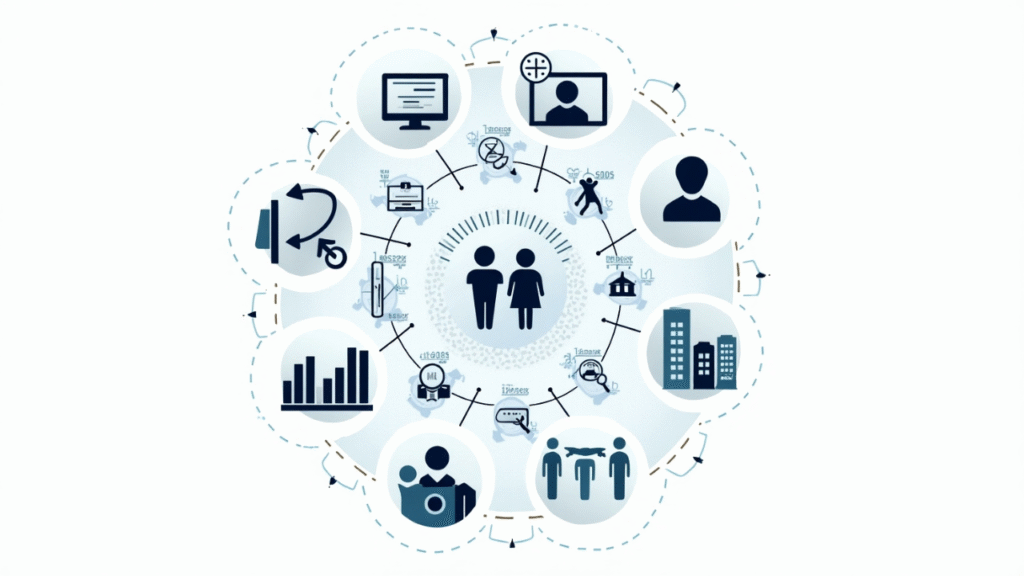Microsoft Corporation News & Analysis.

Microsoft Corporation News & Analysis has become an essential topic in today’s rapidly shifting technology and financial landscape. As one of the most influential tech giants in the world, Microsoft not only drives innovation in artificial intelligence (AI), cloud computing, and enterprise software, but also sets benchmarks for corporate governance, sustainability, and workforce culture.
This article provides a detailed and SEO-optimized analysis of Microsoft’s most recent developments, covering financial performance, AI breakthroughs, workforce strategy, regulatory challenges, and the company’s long-term vision. Each section will highlight areas where images, infographics, or charts can enhance the article’s appeal, ensuring engagement for readers and higher visibility on Google’s search results.
1. Introduction: Why “Microsoft Corporation News & Analysis” Matters
For investors, policymakers, employees, and consumers, Microsoft is not just another tech brand it’s a bellwether of global digital transformation. Founded in 1975 by Bill Gates and Paul Allen, the company has grown from a software vendor into a multi-trillion-dollar ecosystem spanning cloud, AI, gaming, cybersecurity, and sustainability initiatives.
Staying updated with Microsoft Corporation News & Analysis provides insights into:
- How businesses adopt AI and automation.
- How governments engage with Big Tech in public infrastructure.
- How global competition and regulation affect innovation.
- How Microsoft manages culture, growth, and sustainability under CEO Satya Nadella’s leadership.
2. Financial Strength & Market Highlights
Earnings Momentum in 2025
Microsoft reported $281.7 billion in revenue for FY2025, up 15% year-over-year. Operating income surged to $128.5 billion, reflecting strong adoption of AI services across Azure, Office, and enterprise customers. These results reaffirm Microsoft’s position as one of the “Magnificent Seven” tech stocks that continue to drive Wall Street performance.
Shareholder Confidence
The company returned $9.4 billion to shareholders through dividends and share repurchases in Q4 FY2025 alone, maintaining its reputation as a safe-haven stock during economic uncertainty. With its current market capitalization surpassing $3.5 trillion, Microsoft remains in close competition with Apple and Nvidia for the title of the world’s most valuable company.
Azure & Cloud Resilience

Despite growth, Microsoft faced Azure connectivity issues in September 2025, tied to undersea cable disruptions in the Red Sea. Though quickly resolved, the event spotlighted how geopolitical instability can affect cloud reliability. Investors responded with caution, sending stock prices temporarily down by 2.5%.
3. AI, Cloud & Cutting-Edge Innovation
Government AI Partnership
Microsoft signed a landmark agreement with the U.S. General Services Administration (GSA). This deal is expected to generate $3 billion in taxpayer savings within the first year by deploying Microsoft 365 Copilot, Azure OpenAI Services, and cybersecurity tools across federal agencies. Estimates suggest savings could exceed $6 billion by 2026, making it one of the largest government-AI collaborations in history.
Automotive AI Integration
In partnership with Cerence Inc., Microsoft is embedding voice-first AI assistants in vehicles, enabling professionals to access Microsoft 365 Copilot directly through their cars. This signals a future where workplace productivity merges seamlessly with mobility, making vehicles an extension of digital workspaces.
Frontier Firms & Real-World AI
According to Microsoft’s Work Trend Index 2025, the world is entering an era of “Frontier Firms”—businesses fundamentally redefined by AI integration. Microsoft has collected over 1,000 case studies from customers using AI to accelerate digital transformation. Examples include hospitals automating diagnostics, manufacturers optimizing supply chains, and governments streamlining operations.
Optical Computing Breakthrough
A recent milestone in analog optical computing, published in Nature, demonstrates Microsoft’s ability to harness light-based processors for solving complex problems faster than traditional semiconductors. Satya Nadella hailed this as a glimpse into the post-silicon computing era.
4. Corporate Strategy: Workforce, Culture & Environment
Workforce Adjustments
Despite robust financials, Microsoft announced 42 new layoffs in Redmond as part of broader efficiency initiatives. However, its workforce remains steady at 228,000 employees worldwide. The cuts are strategic, primarily affecting non-core roles, while the company ramps up hiring in AI research and product development.
The Growth Mindset Culture
In internal memos, Satya Nadella reinforced the importance of a “growth mindset” encouraging staff to remain “learn-it-alls” instead of know-it-alls. This cultural direction aligns with Microsoft’s push for adaptability as AI reshapes work roles and skill demands.
Sustainability & Carbon Removal Leadership
Microsoft is the world’s largest buyer of technology-based carbon removal credits, representing 80% of all global purchases and investing an estimated $8 billion in 2025 alone. While critics argue this dominance could distort the carbon market, Microsoft views it as part of its ambitious 2030 carbon-negative pledge.
5. Regulatory, Security & Geopolitical Challenges
Pentagon Cloud Security Controversy
In September 2025, serious allegations emerged suggesting that Microsoft may have inadvertently exposed U.S. Department of Defense (DoD) cloud systems to potential vulnerabilities. Reports claimed that the company employed software engineers based in China who had access to elements of Pentagon-related cloud infrastructure.
This revelation ignited a storm of national security concerns, particularly as tensions between Washington and Beijing remain heightened over technology, trade, and military competition. The Pentagon quickly ordered an internal audit of its Microsoft cloud contracts to assess whether sensitive data or mission-critical systems were compromised.
While Microsoft has not confirmed the full extent of the issue, insiders note that:
- The engineers in question reportedly worked on routine cloud maintenance but still had potential visibility into highly classified workloads.
- Lawmakers have called for stricter vetting requirements for tech companies providing cloud services to defense agencies.
- Some critics argue this represents a conflict between Microsoft’s globalized labor strategy designed to access top-tier technical talent at lower costs and the need for airtight national cybersecurity protections.
This incident highlights a broader debate: Should U.S. defense-critical technology providers be required to keep all security-sensitive roles within U.S. borders? Microsoft now faces pressure to reassure government clients that its workforce structure will not compromise national interests.
6. Gaming & Consumer Tech
Microsoft’s gaming and consumer technology division remains one of its most dynamic and strategically significant sectors. Led by Xbox Game Studios, this arm of the business contributes not only billions in revenue but also helps Microsoft strengthen its presence in consumer markets a balance against its enterprise-heavy portfolio.
The Activision Blizzard Acquisition: Expanding Microsoft’s Reach
The $69 billion acquisition of Activision Blizzard, completed in late 2023 after years of regulatory battles, was a watershed moment in gaming history. With this deal, Microsoft secured ownership of some of the most iconic franchises in the world, including:
- Call of Duty (the top-selling console shooter series globally).
- World of Warcraft and Diablo (cornerstones of PC gaming and esports).
- Candy Crush (one of the most profitable mobile titles ever).
This acquisition not only bolstered Microsoft’s first-party game library but also expanded its reach into mobile and esports, two of the fastest-growing sectors in entertainment. It positioned Microsoft to compete more aggressively with Sony’s PlayStation ecosystem and Tencent’s global gaming empire.
Xbox Game Pass: The Netflix of Gaming
A cornerstone of Microsoft’s gaming strategy is Xbox Game Pass, its subscription-based model that offers hundreds of games for a monthly fee.
- As of 2025, Game Pass subscriptions are estimated to have surpassed 35 million users worldwide, making it the largest cloud gaming platform.
- The service includes day-one releases of Microsoft’s own games, offering players immediate access to new titles without additional purchase.
- By integrating Game Pass with Xbox consoles, PCs, and cloud streaming, Microsoft has created a cross-device ecosystem allowing gamers to play virtually anywhere.
This model has been compared to Netflix for gaming, shifting the industry from ownership-based purchasing to access-based consumption. Analysts believe Game Pass could soon become as central to Microsoft’s business as Office 365 is to productivity software.
7. Future Outlook
Cloud Investment Slowdown
Industry analysts expect cloud infrastructure investment growth to slow in 2026 after peaking at $400 billion in 2025. This could affect Microsoft’s Azure growth trajectory, though its AI services may offset the cooling demand for traditional cloud services.
Workforce Globalization & H-1B Visas

Microsoft ranks among the top U.S. companies expanding use of H-1B visas in 2025, particularly for renewals. This signals ongoing reliance on international talent, especially in AI engineering, but may also trigger political scrutiny amid U.S. debates on immigration reform.
AI Everywhere Strategy
Microsoft’s long-term trajectory is clear: AI integration into every product from Office to Windows, from Azure to Xbox. The “AI-first Microsoft” strategy echoes Google’s 2016 pivot but is backed by stronger enterprise penetration and cloud dominance.
Conclusion:
The latest Microsoft Corporation News & Analysis reveals a company at the very center of global technology, business strategy, and even geopolitics. With record-breaking revenue, groundbreaking advances in AI and cloud computing, and ambitious sustainability commitments, Microsoft continues to cement its role as a leader in digital transformation.
Yet, the challenges are equally significant. The Pentagon cloud security controversy demonstrates how globalized labor strategies can clash with national security imperatives. The Windows 11 adoption slowdown underscores the difficulty of pushing innovation when billions still rely on legacy systems. Regulatory scrutiny, market dynamics, and cultural shifts will continue shaping Microsoft’s path forward.
What sets Microsoft apart, however, is its adaptive resilience. Under Satya Nadella’s leadership, the company has cultivated a growth mindset, embraced frontier technologies, and committed to long-term sustainability. Whether through pioneering optical computing, embedding AI into every product, or leading the global carbon removal market, Microsoft is not just reacting to change—it is actively defining it.
For investors, policymakers, business leaders, and technology enthusiasts, staying informed with Microsoft Corporation News & Analysis is critical. The company’s strategies and challenges in 2025 serve as a blueprint for how global enterprises will navigate the intersection of innovation, regulation, and responsibility in the decade ahead. see it
